Scribing Helicopter Stories: Part 2 – Creating a Record
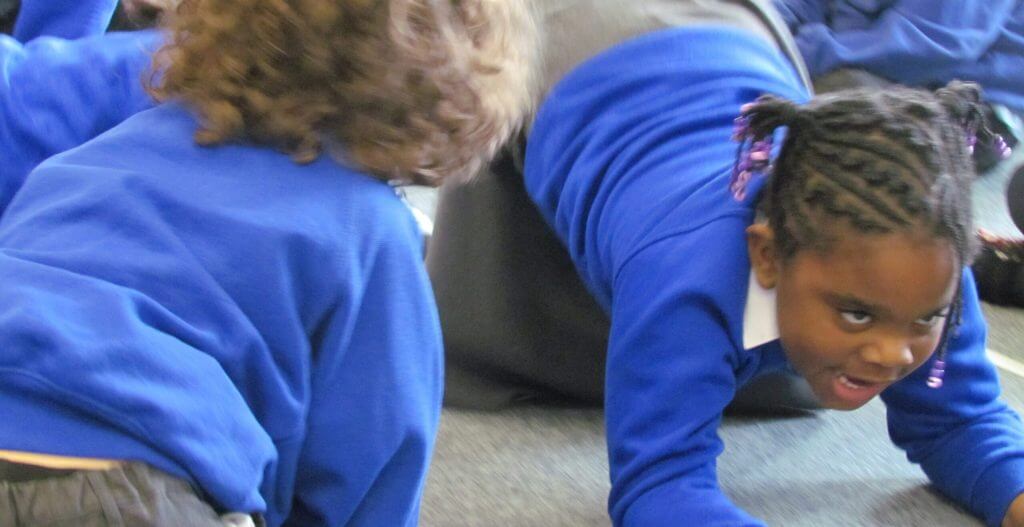
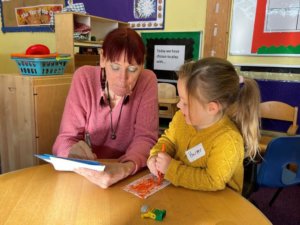
Bella sat beside me. I wrote her name at the top of my A5 sheet of paper, and she started to dictate her story. Like many of the children I run demonstrations with, I had never met her before and I had no idea what words would come out of her mouth. “W. A. Pon. A. Tum.”
“I’m sorry. I didn’t hear you, could you repeat that?” I asked, leaning forward and making sure that this time I was listening more carefully. “W. A. Pon. A. Tum,” she repeated. Immediately I understood. “Once upon a time,” I repeated, saying each word out loud as I wrote it on my A5 page.
“A prin-ess live in a car-all,’ Bella continued. Her speech was difficult to understand, but I tuned my ear into the various nuances of her language and was able to scribe her exactly. The final story went like this:
‘Once upon a time a princess lived in a castle. And with really long hair. With a cape. A pink cape. Her got high heels on. And her got pink hair.’
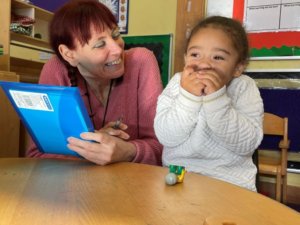
While I was scribing Bella’s story, I was making a lot of choices. I could see that she had a range of speech and language difficulties, and was struggling to shape the words in her mouth. Where this is the case, I always write what I believe the child is trying to tell me, rather than the words they actually say. If I had repeated W. A. Pon. A Tum, that would have felt like I was making fun of her.
W. A. Pon. A. Tum became Once upon a time. By repeating these words back to Bella, I acknowledged that I understood what she was telling me. However, when it came to the grammar side of her story I wrote her words verbatim. – Her got high heels. And her got pink hair.
An Exact Record:
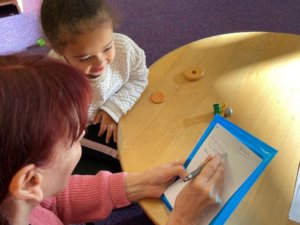
By writing verbatim, we create an exact record of the children’s grammatical understanding. This gives us a range of information on where each child is with regards to their speaking, narrative development and comprehension. I keep copies of children’s stories in individual books, made out of a cover and a treasury tag, and in this way I can also see progression.
To change the sentences above to She has got high heels and she has got pink hair, would be to change the rhythm of the authors speech. When Bella dictated her story to me, she said these words with such pride, looking into the distance as if she could see the princess she was describing.
Modelling language during the Acting Out:
When Bella acted her story, I read each phrase back to her, exactly as she said it, and then I asked to see the actions.
Can I see the girl walking around the stage in her high heels? Can you pretend that you have pink hair?
Bella moved her head as she walked, as if shaking out a mane of pink locks. She smiled as she stepped into the castle that had been created by four of her classmates. At that moment, I didn’t need to correct her grammar. The learning that was happening without my intervention was plentiful, and I doubt she would have noticed anyway, she was so engaged in her own creation.
Bella was demonstrating creativity. During the scribing she created an imaginary character. During the acting, she demonstrated comprehension, by bringing the story to life. During the process her confidence soared, which isn’t surprising, as that is what happens, when our ideas are appreciated and our unique way of expressing ourselves is accepted.
A Language-Rich Environment:
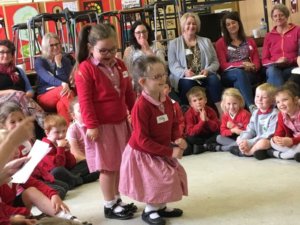
I am always modelling language with children. I do it through conversation, through telling oral stories, and through repeating back sentences in the correct tense. But when I do Helicopter Stories I write each word exactly as it is told.
Often fight becomes fighted, go becomes goed, run becomes runned. This is one of the most common errors that occurs in early language development. When children add an ED in the wrong place they are demonstrating an understanding of the grammar rule where we add these two letters to a word to move it to the past tense. What we see with these errors is children applying a rule correctly, and the only reason it’s incorrect is because the English language is full of irregular verb. I have never heard an adult say fighted, or goed or runned. Linguist, Gary F. Marcus refers to this error as over-regularizing the past tense rule. In an article entitled Why Children Say Breaked, he stated, “Because parents almost never over-regularize, these errors demonstrate that the language learning involves more than mere imitation.” Children are making sense of a rule, and over time they will learn when not to use it.
If we bombard children with questions, corrections, or comments about what they are saying and how they should say it correctly, we are stopping them from discovering these things for themselves.

I am told beautiful stories each day by the children I am lucky enough to work with. Regardless of where they live, or what their lives have been like so far, all the children I meet understand Helicopter Stories and engage with it, as if they have always known about it and have just been waiting for someone to ask. This is their opportunity to express themselves, however they choose, a place where they can play with language and develop their narrative ideas without fear of getting anything wrong. Believe me, the rewards are worth it.
Here is a story from 5 year old Max:
Once upon a time there was a shark. The shark lived in the water and the shark can jump high. And then there was a lot of mermaids in the water. And the shark ate all the mermaids up. And then all the heroes came and killed the shark. And then the mermaids were free again.
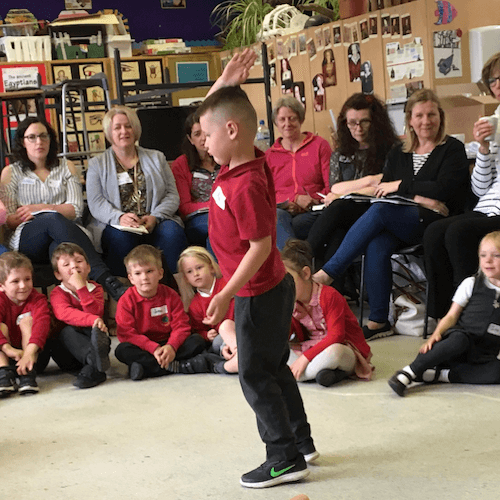
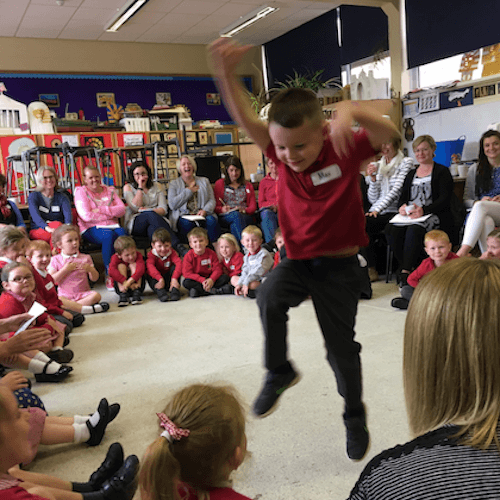
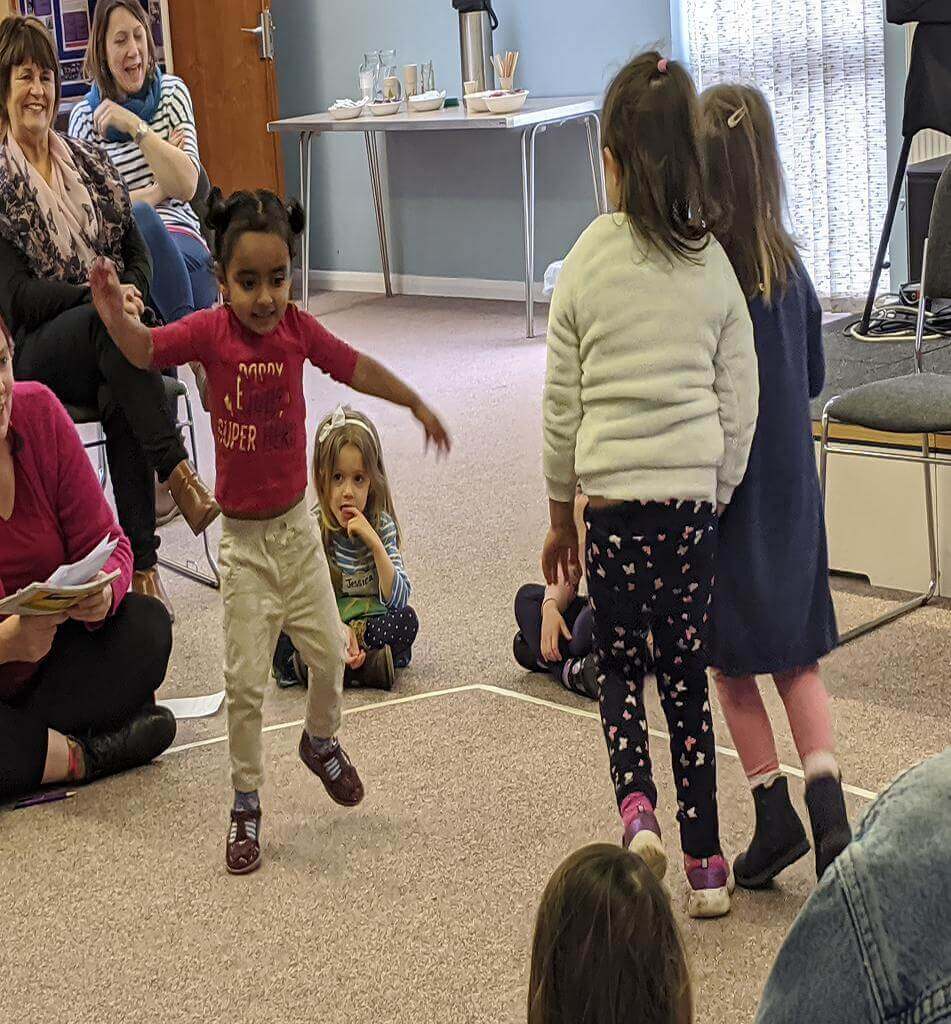
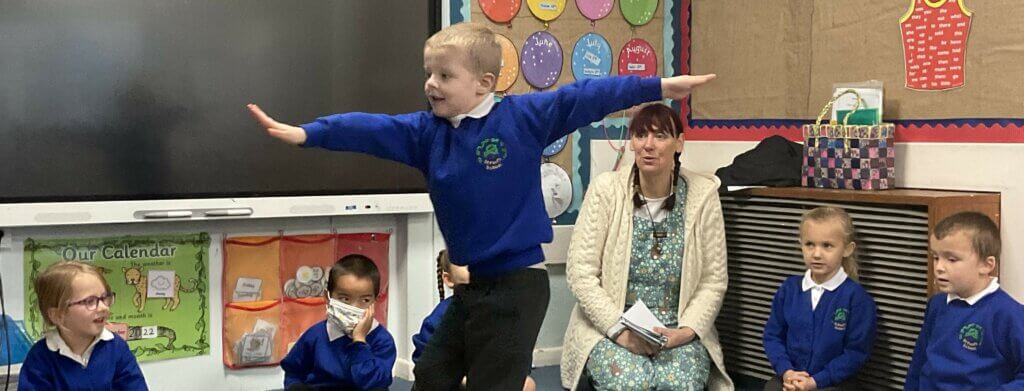
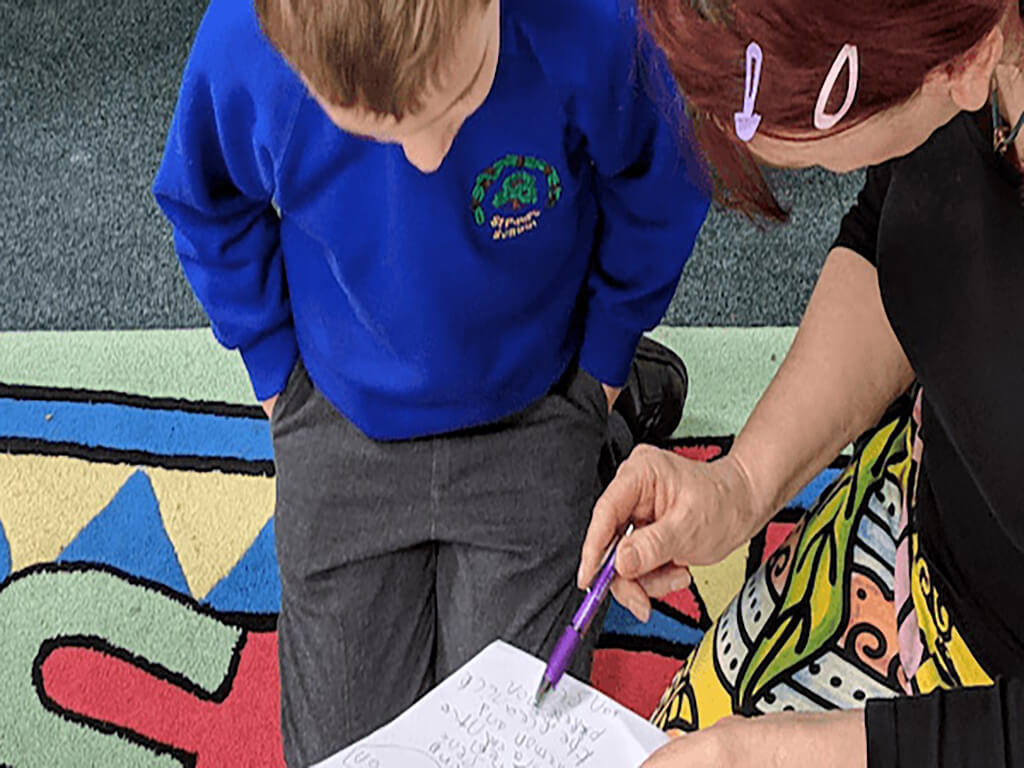
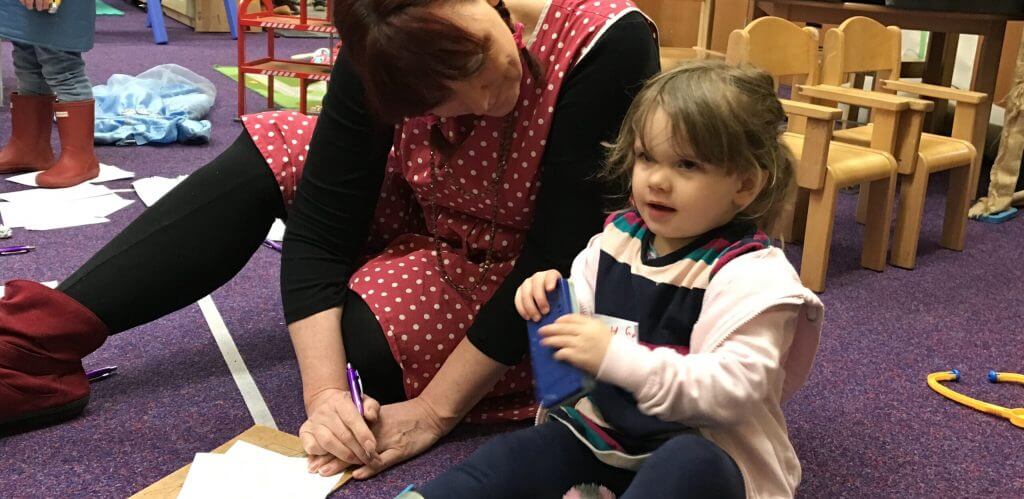
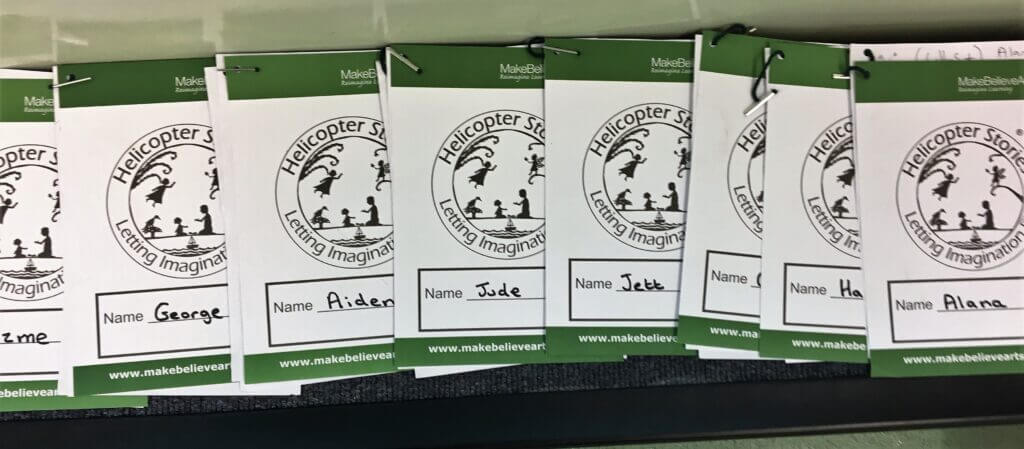
Hi Trisha. I tried Helicopter Stories for the first time this week and despite a few hiccups and challenges, I think it went really well. I have already had moments, as you predicted, of children surprising me. Those unexpected children stepping up to the plate and joining in. Can’t wait to try it again – I just hope the children are as enthusiastic!
Hi Claire. Thank you for your message. I am so pleased it is working for you. If you have any questions I will always do my best to answer them. I am sure the children will be as excited next time. I have never met a group who isn’t.
I tried Helicopter Stories with my Y2 class for the first time this week and they loved it. They keep asking when we are going to do it again. I think providing a language rich environment is so important to give the children lots of ideas for their stories. For the last two weeks we have had a focus on Julia Donaldson books so I am expecting some of these characters to pop up in their stories.